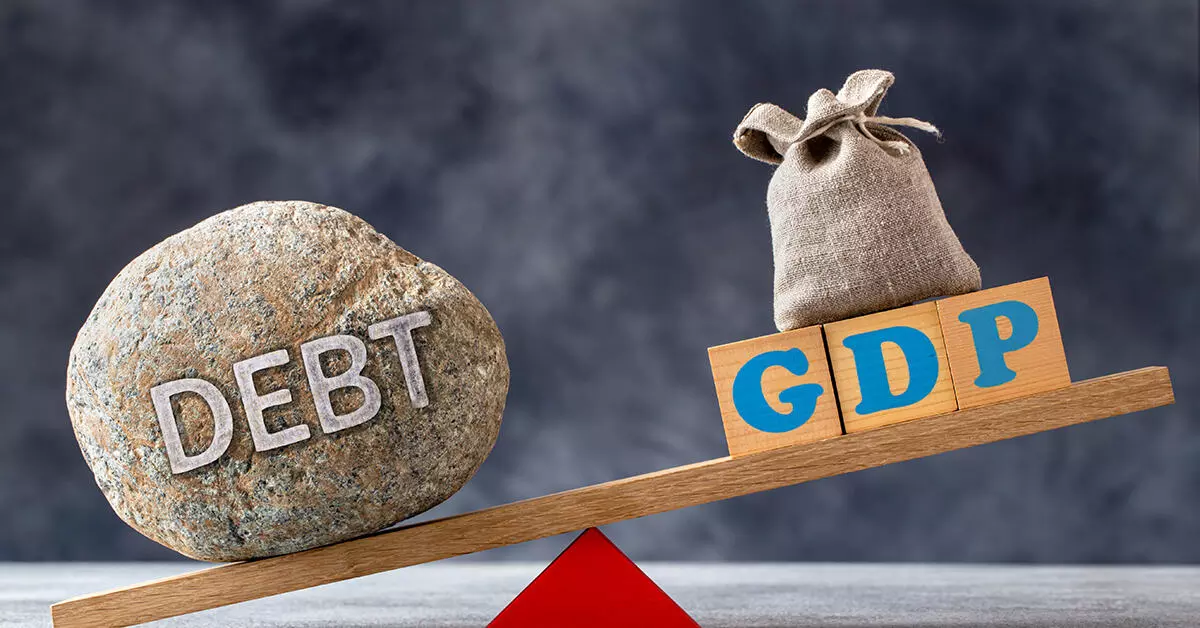Mixed signals

As of June 2023, India's external debt reached USD 629.1 billion, reflecting an increase of USD 4.7 billion from its level at the end of March. Over the past four quarters, the country's external debt has swelled by a substantial USD 16 billion. These figures, released in a report by the Reserve Bank of India (RBI), may prima facie raise concerns, but a set of accompanying data reveal a nuanced picture of India's evolving financial landscape. There has been a marginal decline in the external debt to GDP ratio, which decreased from 18.8 per cent at the end of March 2023 to 18.6 per cent by the end of June 2023. To put this in a wider perspective, a year earlier, at the end of June 2022, the ratio stood at 19.4 per cent. This serial decline reflects a positive trend, indicating a slight reduction in India's relative external debt burden when measured against the size of its economy. The external debt to GDP ratio is a critical metric for assessing a country's ability to manage its debt. It's essentially a gauge of the financial health and stability of a nation. A lower ratio signifies that a country is managing its external obligations more efficiently compared to its economic output. Therefore, the modest reduction in this ratio should be seen as a positive development. However, the RBI report also highlighted the role of currency fluctuations in these debt dynamics. The valuation effect, primarily driven by the appreciation of the US dollar against major currencies such as the yen and Special Drawing Rights (SDR), amounted to USD 3.1 billion. If one were to exclude this valuation effect, the increase in external debt would have been USD 7.8 billion instead of the reported USD 4.7 billion between the end of March and the end of June in 2023. The valuation effect, in simple terms, refers to changes in the value of assets or liabilities due to shifts in exchange rates. For a country like India with a substantial and diversified external debt portfolio, these currency movements can have a significant impact on its financial health. Notably, USD-denominated debt remains the largest component, accounting for 54.4 per cent of the total debt at the end of June 2023. Debt denominated in the Indian rupee follows closely at 30.4 per cent, with SDR at 5.9 per cent, yen at 5.7 per cent, and the euro at 3 per cent. This diverse mix of currencies in India's external debt portfolio can act as a safeguard against currency-specific risks and vulnerabilities, but the reliance on USD is still evident. Another key takeaway from the RBI's data is the shift in the structure of India's external debt over the past year. Long-term debt, with an original maturity period of more than one year, increased from June 2022 to June 2023. Conversely, the proportion of short-term debt, with an original maturity of up to one year, decreased slightly over the same period. This shift indicates that India is managing its debt with a longer-term perspective, reducing immediate repayment pressure. However, the rise in the debt service ratio might be a matter of concern for some. Debt service, encompassing both principal repayments and interest payments, increased from 5.3 per cent of current receipts at the end of March 2023 to 6.8 per cent at the end of June 2023. This suggests that a larger portion of India's income is now being allocated to service its debt, potentially leaving fewer resources available for other critical expenditures and investments. To sum up, while the rising debt figures raise some eyebrows, the decline in the external debt to GDP ratio and the shift towards long-term debt demonstrate prudent debt management. However, the increase in the debt service ratio underscores the need for careful fiscal planning and investment in initiatives that can boost income and revenue streams. India must continue to navigate these challenges diligently, taking into account the impact of currency fluctuations and pursuing strategies that enhance its capacity to manage debt effectively. Achieving a sustainable balance between debt management and economic growth is key to securing the country's financial stability and future prosperity.



